Section 3 - At the Telescope with a CCD Camera
Page 15
3. At the Telescope with a CCD Camera
This section describes what goes on the first time you take your CCD camera out to the
telescope. You should read this section throughout before working at the telescope. It will
help familiarize you with the overall procedure that is followed without drowning you in the
details. It is recommended you first try operating the camera in comfortable, well lit
surroundings to learn its operation.
3.1. Step by Step with a CCD Camera
In the following sections we will go through the steps of setting up and using your CCD
camera. The first step is attaching the camera to the telescope. The next step is powering up
the camera and establishing a communication link to your computer. Then you will want to
focus the system, find an object and take an image. Once you have your light image with a
dark frame subtracted, you can display the image and process the results to your liking. Each
of these steps is discussed in more detail below.
3.2. Attaching the Camera to the Telescope
ST-7E, ST-8E, ST-9E, ST-10E and ST-1001E cameras are similar in configuration. The CCD head
attaches to the telescope by slipping it into the eyepiece holder or attaching it via t-threads. A
fifteen-foot cable runs from the head to the host computer's parallel port. The camera is
powered by a desktop power supply. Operation from a car battery is possible using the
optional 12V power supply or with a 12V to 110V power inverter.
Connect the CCD head to the parallel port of your computer using the supplied cable
and insert the CCD Camera's nosepiece into your telescope's eyepiece holder. Fully seat the
camera against the end of the draw tube so that once focus has been achieved you can swap
out and replace the camera without having to refocus. Orient the camera so that the CCD's
axes are aligned in Right Ascension and Declination. Use Figure 3.1 below showing the back of
the optical head as a guide for the preferred orientation. Any orientation will work, but it is
aggravating trying to center objects when the telescope axes don't line up fairly well with the
CCD axes.
Next, connect the power cable and plug in the desktop power supply. The red LED on
the rear of the camera should glow and the fan should spin indicating power has been applied
to the unit. We recommend draping the cables over the finderscope, saddle or mount to
minimize cable perturbations of the telescope, and guard against the camera falling out of the
drawtube to the floor. We also recommend using the T-Ring attachments for connecting the
camera to the telescope, as the cameras are heavy.


















